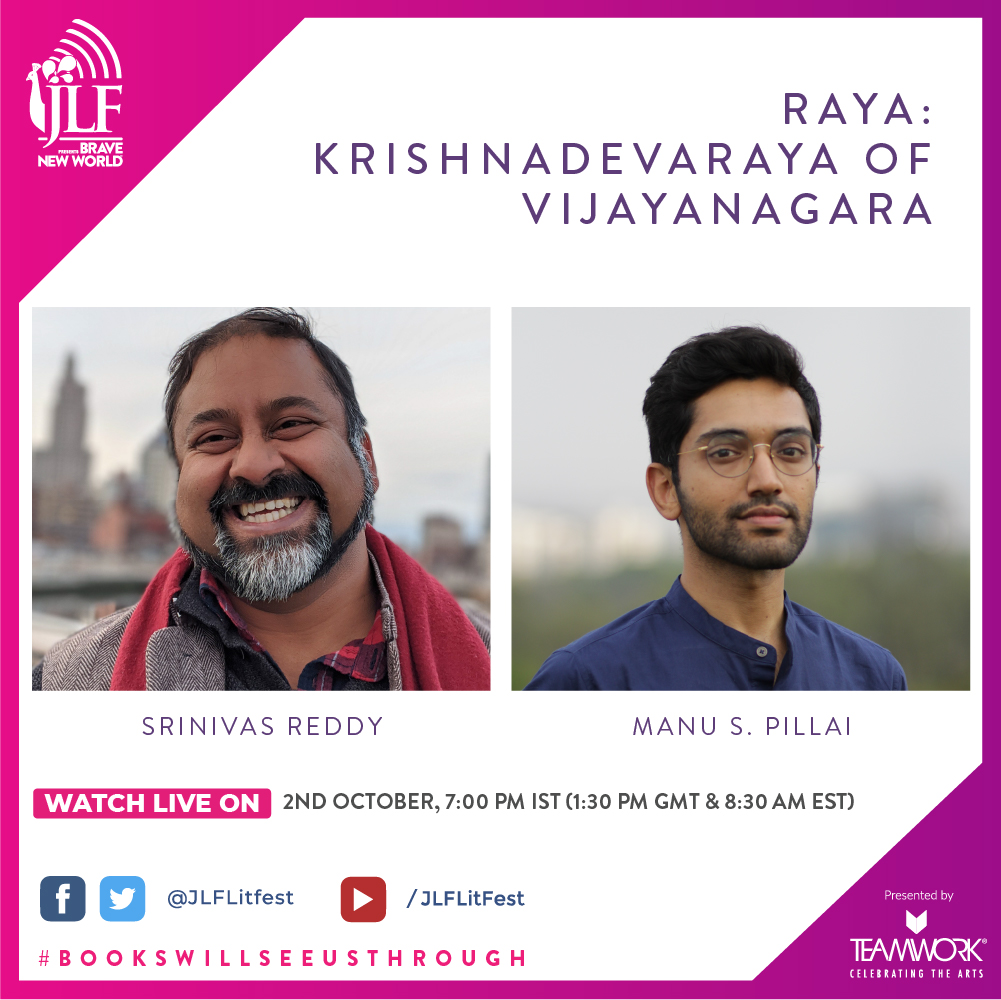


Raya: Krishnadevaraya of Vijayanagara
For a full-time history aficionado, there's nothing better than tuning in to JLF Brave New World and listening to a conversation discussing the life and times of an extremely captivating figure from the pages of the past, Krishnadevaraya of Vijayanagara. In conversation with historian Manu S. Pillai, Srinivas Reddy, shed light on the political and cultural legacy of the 16th-century Vijayanagara king, Krishnadevaraya
The colloquy commenced with a discussion on the 'unorthodox' origin of Raya, who did not hail from a 'historically accepted' or exalted caste background for a king. The legend of Raya's unorthodox origin is wrapped in enigma, with one account suggesting that his father had a relationship with a court dasi (servant), making Raya a 'dasi-putra' (son of a female servant).
However, Reddy challenged the notion of viewing Raya's background as an exception, as it perpetuates stereotypical ideas about kingship. He emphasised that Vijayanagara's entire kingship was non-kshatriya, making Raya's caste background less significant in understanding his uniqueness.
The discussion then delved into Raya's political relationships with neighbouring ruling elites. Reddy highlighted the strained conflict with a Gajapati king, challenging the notion that Raya's most significant battles were against the Deccan Sultans. Reddy wanted to emphasise Vijayanagara's strained relationship with the Gajapatis to counterbalance the prevailing theme that the empire was constantly fighting the Sultans.
Language emerged as a key theme in the conversation, with Reddy shedding light on Raya's cultural legacy as a king of Karnataka who wrote in Telugu about a Tamil saint, Andal. Raya's work Amuktamalyada described the wedding of Lord Ranganayaka and Andal. Reddy noted that Raya's uniqueness lies in his ability to integrate various strands, such as connecting the old Tamil-bhakti of the Alvars with the Sanskritized overlay of Sri-Vaishnavism through the influence of Ramanuja.
Raya's relationship with cultural production and political power was evident through his establishment of the 'Bhuvana Vijayam,' a hall dedicated to literature and culture. He also cultivated a bureaucracy rather than a nobility to safeguard his political power.
Reddy claimed that Raya's political philosophies were inspired by the Arthashastra of Kautilya and ideas from the Portuguese, adapted to the specific 16th-century context.
Regarding the lack of historical material, Reddy highlighted the importance of oral testimonies and the passing down of memories through stories and images in Indian history. He aims to challenge typical Western historical methodologies in his book Raya: Krishnadevaraya of Vijayanagar to give legitimacy to other stories and legends surrounding the king, which may not fit the typical historical narrative.

Leave a comment